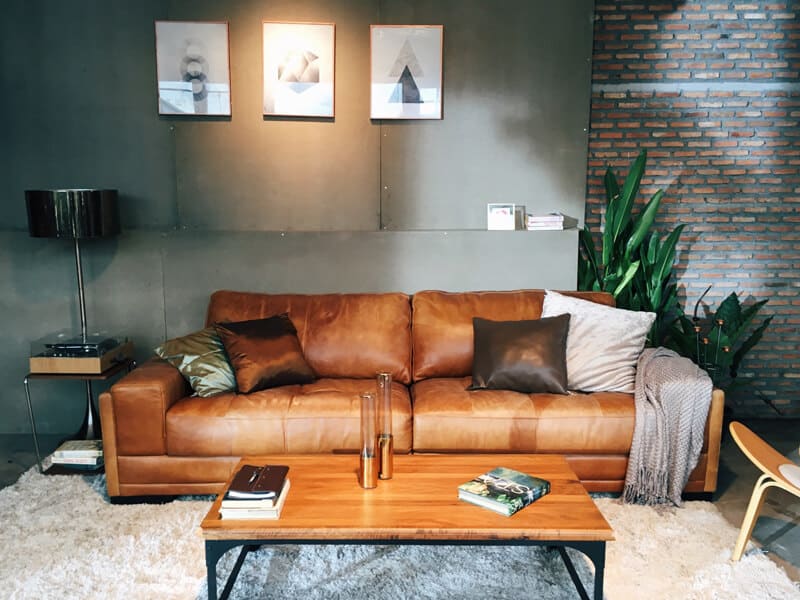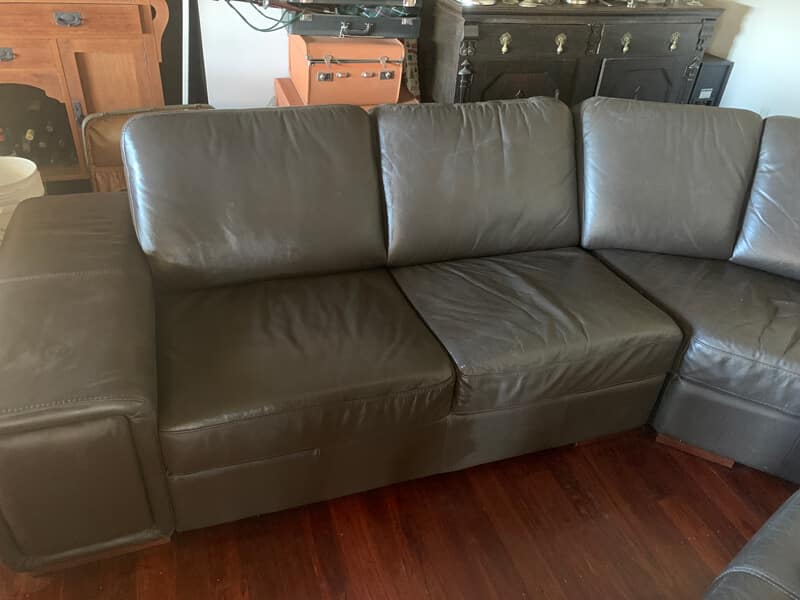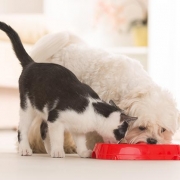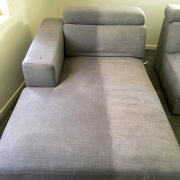How To Keep Your Leather Couch Clean
Stop me if you’ve heard this one before: “I moved into a house with my girlfriend and was given the ultimatum, me or the couch”. What you don’t know is that the couch can easily be revived, so you can have the couch and the girlfriend.
Couches are impervious to a wide variety of stains, such as muddy dog prints, smudges and the ever-damaging wine stain. In a perfect world, couches wouldn’t stain and pet hair wouldn’t stick but that’s not how the world works. Instead, leather couches are one of the most susceptible to stains, particularly white leather. So how do you combat this problem? Regular cleaning of course!
How often should you clean your couch?
Different couches require different cleaning schedules, as do couches used at home or in a business. So first things first, you need to find out what kind of leather upholstery you have. Start this step by checking the label or written materials that came with your couch. If this doesn’t work, look up the item on either the retailers or the manufacturer’s website.
Your leather couch can be one of three types: aniline leather, semi-aniline and pull-up leather. Unsure what I mean? Read on!
Aniline Leather
Aniline leather, also known as pure aniline, full aniline or unfinished leather has a soft, luxurious feel. Made from the best quality hides, aniline is full-grain leather that has been dyed without pigments or topcoats applied, thus unprotected from staining. Aniline leather has that butter-soft feeling that stays warm in winter but cool and dry in summer. Unfortunately, as the name suggests, cleaning this type of leather can be a gruelling process, with regular cleaning recommended. To keep aniline leather clean, experts recommend dusting weekly using a soft cloth or vacuuming with a soft brush.
Cleaning Aniline Leather
Due to its unprotected nature, this type of leather requires extensive cleaning, with 2 to 3 cleans recommended to see a difference. Start by dividing the leather up and focusing on one panel at a time. Avoid store-bought products and stick to plain old H20, not tap however, distilled water is recommended. The myth that leather doesn’t like water is only partly true, leather doesn’t mind it. What it doesn’t like, however, is the minerals in tap water. If you use tap water over distilled water, you’ll end up with white marks and dull-looking leather.
Semi-aniline Leather
The majority of leather furniture is made with protected or finished leather. Labelled semi-aniline, aniline plus pigment or just pigmented leather, this leather is less susceptible to staining as compared to its counterpart. Whilst semi-aniline leather doesn’t feel as luxurious as aniline leather, it’s protective pigment coating shortens both cleaning time and intervals. Similar to aniline leather, experts recommend dusting weekly with a soft cloth (microfibre preferred) or vacuuming with a soft brush.

Cleaning Semi-aniline Leather
Thankfully, semi-aniline leather is a lot easier to clean, with everyday marks grime and dirt easily removed with a damp cloth and a very mild soap solution. Avoid harsh chemicals or brushes, as these will ruin and scratch the leather, causing the colour to fade faster. If you’ve spilt something on your couch, use a damp cloth to immediately dab off any excess liquid. Do not rub or use excess water, as water staining can occur.
Pull-up Leather
Pull-up leather is similar to aniline except for the treatment using oil or wax. Made from high-quality hides, pull-up leather has a slightly waxy or oily feel and a truly unique pull-up look. Thanks to the oil or wax treatment, this type of leather packs added protection, cutting down on maintenance and cleaning. One downside, however, is pull-up leathers ability to quickly develop scuff marks with use. Similar to both aniline and semi-aniline leather, pull-up leather requires weekly cleaning. The method, however, is different for this type, with a feather duster preferred.

Cleaning Pull-up Leather
Similar to the cleaning tips mentioned for both aniline and semi-aniline leather, pull-up leather should be carefully wiped with a damp cloth. Avoid pressing too hard or wiping with too damp of a cloth. Scuff marks and signs of wear can be polished with a soft, dry cloth, as the oil or wax moves and hides slight scratches. Stain removal should be left up to the professionals, as a delicate touch combined with knowledge is required to avoid damaging the leather.
How about couches used at home as opposed to those used in the workplace? This is where cleaning intervals greatly differ.
Home Couch
Leather couches used in your home require weekly dusting with a dry cloth, along with a weekly vacuum into those crumb catching crevices. Experts recommend giving the cushions a thorough vacuum, removing them and vacuuming underneath to prevent dust and crumbs from turning into ingrained grime.
Commercial Couch
For leather couches used in Hotels, Boardrooms, Lodges and more, the usage is heavily increased, which means a more thorough clean is required. A cleaning schedule should be undertaken by an expert every 6 to 12 months.
Leather Couch Stain Removal
Whether you run a fast-paced business or laze around on your recliner, there is one simple way to combat causing undue harm to your leather couch. Rather than advising against ever spilling anything (that’s an impossible task), if you do, there are two simple steps to take.
Step 1. Blot the substance as quickly and gently as possible with a clean, dry, white cloth. This will absorb the excess liquid, and stop the spill spreading. This won’t stop the couch from staining but will lessen the impact.
Step 2. Call a leather cleaning professional. South QLD Restoration offers upholstery cleaning for all types of leather. If you’ve stained your leather couch, contact South QLD Restorations today on 1300 762 021.














